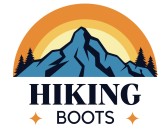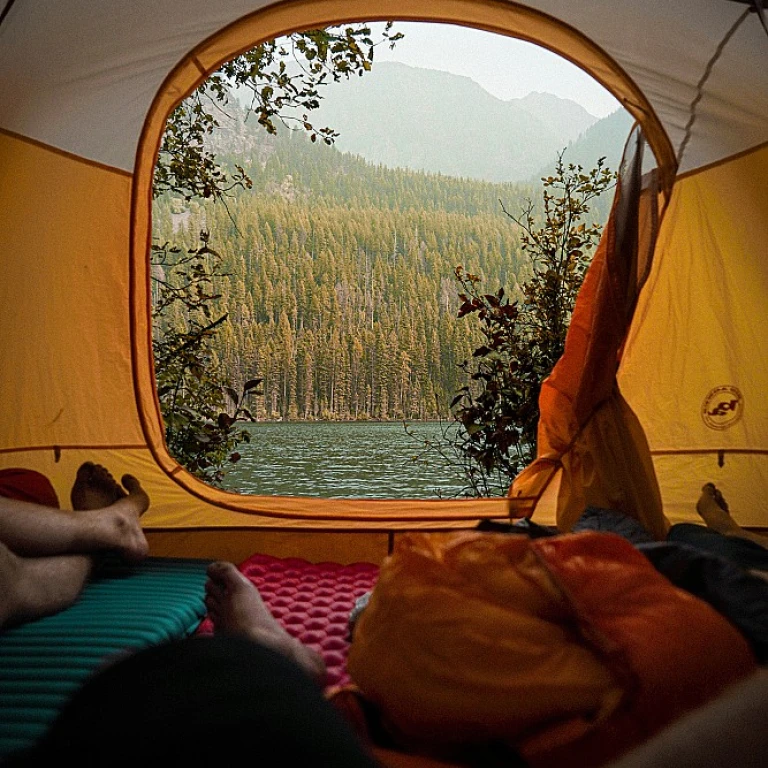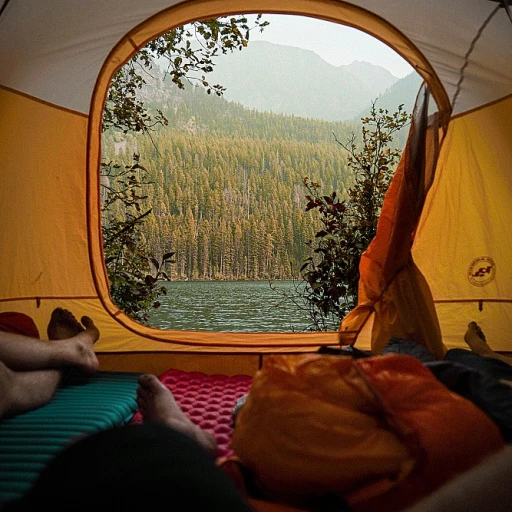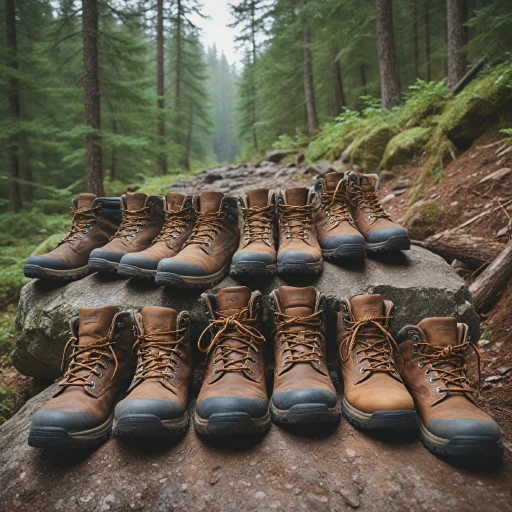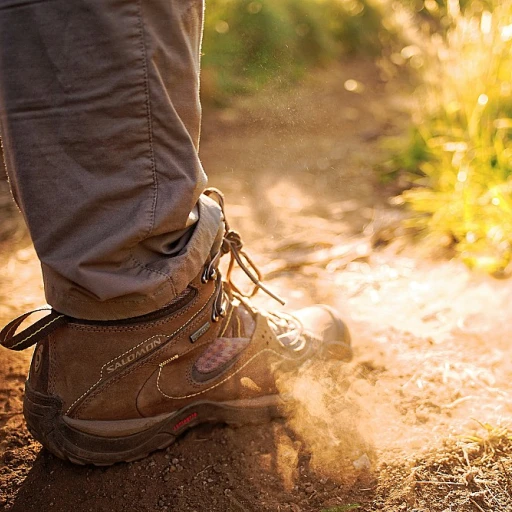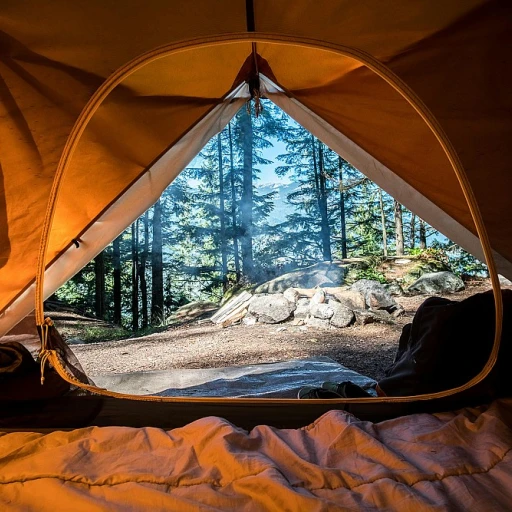
Understanding the Appeal of Leather in Hiking Boots
The Unparalleled Charm of Leather Hiking Boots
There is something inherently appealing about leather hiking boots that continues to draw outdoor enthusiasts worldwide. Known for their timeless appearance and durable nature, leather boots have remained a staple in the hiking community for decades. Classic Look and DurabilityLeather's natural aesthetic makes it a popular choice for those seeking both style and substance. Its classic look is complemented by its robustness, offering exceptional longevity compared to synthetic materials. When well-maintained, leather hiking boots can withstand the test of time, enduring the rugged terrain of mountains and backpacking trails. Weather-Resistant Qualities
Hikers value leather not only for its durability but also for its impressive weather-resistant properties. Many leather hiking boots, such as those equipped with gtx technology, provide excellent waterproof capabilities. This ensures that feet remain dry, even when trekking through streams or facing unexpected rain. Enhanced Comfort and Support
Leather's natural ability to mold to the shape of the foot offers an unparalleled level of comfort as it gradually conforms to your foot, creating a custom fit. This can help reduce the risk of blisters and pressure points during long hikes. Moreover, leather provides excellent ankle support, promoting stability on uneven surfaces. Wide Range of Choices
Today's market offers various options for both men and women, ranging from mid waterproof designs to those specifically designed to accommodate wider feet. Models like the Merrell Moab mid gtx or the Hoka Kaha provide hikers with premium features at competitive prices, ensuring there is a suitable option for every hiking enthusiast. For those seeking further insights on women's hiking footwear options, consider exploring the best trekking shoes for women to enhance your outdoor experiences. Whether it's toe box comfort or nubuck leather finishes, finding the right leather boot can significantly impact your hiking adventures.
Comparing Leather to Synthetic Materials
Why Synthetic Materials Have Gained Popularity
As hiking becomes a more widespread activity embraced by both amateurs and seasoned adventurers, the type of hiking boots available has significantly expanded. Leather boots have long been revered for their durability and timeless appeal. However, synthetic materials have carved out their niche by offering unique benefits that cannot be ignored.
Synthetic boots, such as the popular Merrell Nova 3, often boast a lightweight design, making them particularly appealing for backpackers looking to reduce the load on their feet. In comparison to leather—as seen in the heavier Hoka Kaha or Salomon Quest boots—synthetic options can offer increased breathability, which helps maintain comfort and temperature regulation during prolonged hikes.
Moreover, the price point often makes synthetic boots an attractive choice for budget-conscious hikers. While high-quality leather boots can present a significant upfront cost, synthetics generally offer a level of technology and design at more accessible prices. Whether you’re looking for mid waterproof or gore tex capabilities in your next pair of hiking boots, the financial commitment could be lower with synthetic materials.
When it comes to waterproof features, both leather and synthetic boots can come equipped with advanced technologies like gore tex to keep feet dry. However, many find that synthetic materials dry quicker, which is beneficial during unexpected downpours or wet terrains.
Finally, the fit and comfort of your hiking footwear are crucial. Leather boots offer exceptional moldability to the foot over time, but synthetic boots often come with adjustable features like toe boxes and adaptable widths, catering to a broad range of fits whether for men or women.
In choosing between leather and synthetic, it’s important to weigh these factors. Your hiking environment, budget, and comfort preferences are key in deciding whether the tried-and-true durability of leather or the modern adaptability of synthetic is the best choice for your hiking adventures.
Caring for Your Leather Hiker Boots
Preserving the Quality and Longevity of Your Leather Hiker Boots
Leather hiker boots are renowned for their durability and comfort, provided they are cared for properly. Here are some insightful tips to ensure your leather hiking boots remain waterproof and in top condition throughout their lifespan.- Regular Cleaning: After a memorable day on the trail, it's essential to remove dirt and debris from your hiking boots. A simple wipe down with a damp cloth is often sufficient for light dirt. For tougher grime, gently scrub using a soft brush and mild soap. This practice helps maintain both the appearance and performance of the boots.
- Conditioning: Leather, like nubuck or full-grain, can dry out over time, leading to cracks. Using a leather conditioner specifically formulated for outdoor footwear can help keep your boots soft and supple. Conditioning also enhances the waterproof quality, ensuring your feet stay dry.
- Waterproofing: Over time, even the best waterproof hiking boots might need additional treatment. Applying a waterproofing agent can restore the breathable barrier, which is especially important for those long backpacking trips. Pay special attention to seams and the toe box, as these areas are prone to water ingress.
- Drying: After exposure to wet conditions, it’s crucial to dry your leather boots properly. Avoid direct heat sources like fireplaces or radiators, as these can cause leather to crack. Stuffing them with newspaper and allowing them to air dry naturally will preserve the boot structure and fit.
- Storage: When the hiking season winds down, ensure your boots are stored in a cool, dry place. Keep them out of direct sunlight and consider using shoe trees to maintain their shape. Avoid tight spaces that could crush the toe box or affect the fit.
Choosing the Right Leather Hiker Boots for Your Needs
Factors to Consider When Selecting Your Ideal Leather Hiking Boots
Finding the right leather hiker boots isn't just about aesthetics—it's about ensuring comfort, safety, and durability on the trail. Here's what to look for:- Fit and Comfort: Your hiking boots should feel comfortable right out of the box. Pay attention to the toe box; it should be spacious enough to wiggle your toes while providing a snug fit around the midfoot. Consider models with advanced insoles for added arch support.
- Weight and Flexibility: While leather boots are generally sturdier, some might find them heavy. Opt for lightweight hiking boots if you prioritize agility, yet ensure they provide ample ankle support, especially for backpacking adventures.
- Waterproofing and Breathability: While a leather boot's natural waterproof properties are a plus, enhancing it with a Gore-Tex lining can significantly improve performance. Options like 'mid waterproof' or 'mid GTX' boots are great for enduring wet conditions without sacrificing breathability.
- Foot Type and Sizing: Consider the width of your feet—men and women sizes differ, as do needs for wide-feet options. Some brands offer boots with varying widths, which is crucial for avoiding blisters or discomfort.
- Material Choice: Nubuck leather is a popular option for its rugged durability and classic look. Ensure the boots are LWG certified as it endorses responsible sourcing methods.
- Support Features: Look for boots that provide superior ankle support and toe protection if you're navigating challenging terrains.
- Budget: Prices can vary broadly from economical options to premium offerings. Strive to find a balance between quality and cost that suits your hiking style. For those mindful of budget, exploring price-competitive options is invaluable.
The Environmental Impact of Leather vs. Synthetic Boots
Environmental Considerations in Choosing Materials for Hiking Boots
When choosing between leather and synthetic materials for hiking boots, understanding the environmental impact is essential. Leather, primarily because it is derived from animal products, has a varying environmental footprint depending on its tanning and processing. Among different tanning processes, nubuck leather, for example, is often desired for its softness and durability but can sometimes involve a more complex manufacturing process. LWG Certified (Leather Working Group) leather is a more environmentally conscious choice, ensuring best practices in tanning, which results in reduced wastage and better water management during production. This kind of certification can be a decisive factor for environmentally responsible consumers looking for hiking boots that align with their values. On the other hand, synthetic materials in boots offer a more streamlined production process but often involve plastics and chemicals that aren't biodegradable. While they can sometimes offer benefits like lightweight design and waterproof features, the long-term environmental toll due to non-biodegradable waste presents a challenge. Considering the environmental impact should also involve looking into brands that prioritize eco-friendly practices, regardless of whether they are producing leather or synthetic boots. Brands that invest in sustainable production methods, whether using gore tex or lightweight synthetic materials, contribute positively to reducing the overall ecological footprint of your hiking gear. For those who prioritize environmental sustainability, research into a brand's ecological practices and certifiable standards can guide wiser purchasing decisions, whether choosing boots for backpacking or women hiking shoes. Each choice, from the wide toe box of a hiking boot to the support it offers for mid-waterproof hikes, can reflect both personal comfort and environmental responsibility.Real-Life Experiences: Testimonials from Hikers and Mountaineers
Voices from the Trail: Insights from Veteran Hikers
Choosing the right leather hiking boots can completely transform one’s trekking experience, as echoed by avid hikers and experienced mountaineers. Here’s a collection of real-life testimonies regarding the performance and benefits of leather boots, shedding light on the unique advantages they offer.
Unparalleled Comfort and Fit
Several outdoor enthusiasts swear by the comfort and snug fit that leather boots provide. One hiker noted that the break-in period was worth the initial effort because of the exceptional comfort leather boots offered on long treks. The fit and supportive nature of leather allow the feet to mold into the boot over time, providing excellent ankle support necessary for difficult terrains.
Weather Readiness
When it came to weather protection, many hikers leaned towards the waterproof properties of mid-GTX and other waterproof leather options. The ability of leather to withstand rain and snow was often highlighted, emphasizing the best choice for those navigating unpredictable weather conditions. The waterproof membrane, such as gore-tex, combined with the natural resistance of leather, convinced several mountaineers to opt for leather models over synthetic ones, particularly during winter hikes.
Durability and Longevity
Durability remained a consistent theme among testimonies, with many hikers emphasizing the longevity of leather hiking boots over synthetic alternatives. They applauded the robust construction and tough nubuck leather of their boots, sharing stories of trails conquered over years rather than months. These boots not only survived the test of time but also offered remarkable cost price efficiency when considering their prolonged life span.
Supporting Different Needs
For those with wider toe boxes or seeking specific support, leather boots emerged as adaptable options. Numerous trekkers with wider feet discovered that leather boots provided a more customizable and comfortable solution than their synthetic counterparts. The adaptability also extends to various hiking boot brands like merrell moab and salomon quest, which offer a range of leather models catering to both men and women in various sizes, including wide options.
According to the seasoned wisdom of hikers who’ve traversed vast landscapes with their trusted leather companions, the journey is undeniably enriched with the right pair of leather boots.
